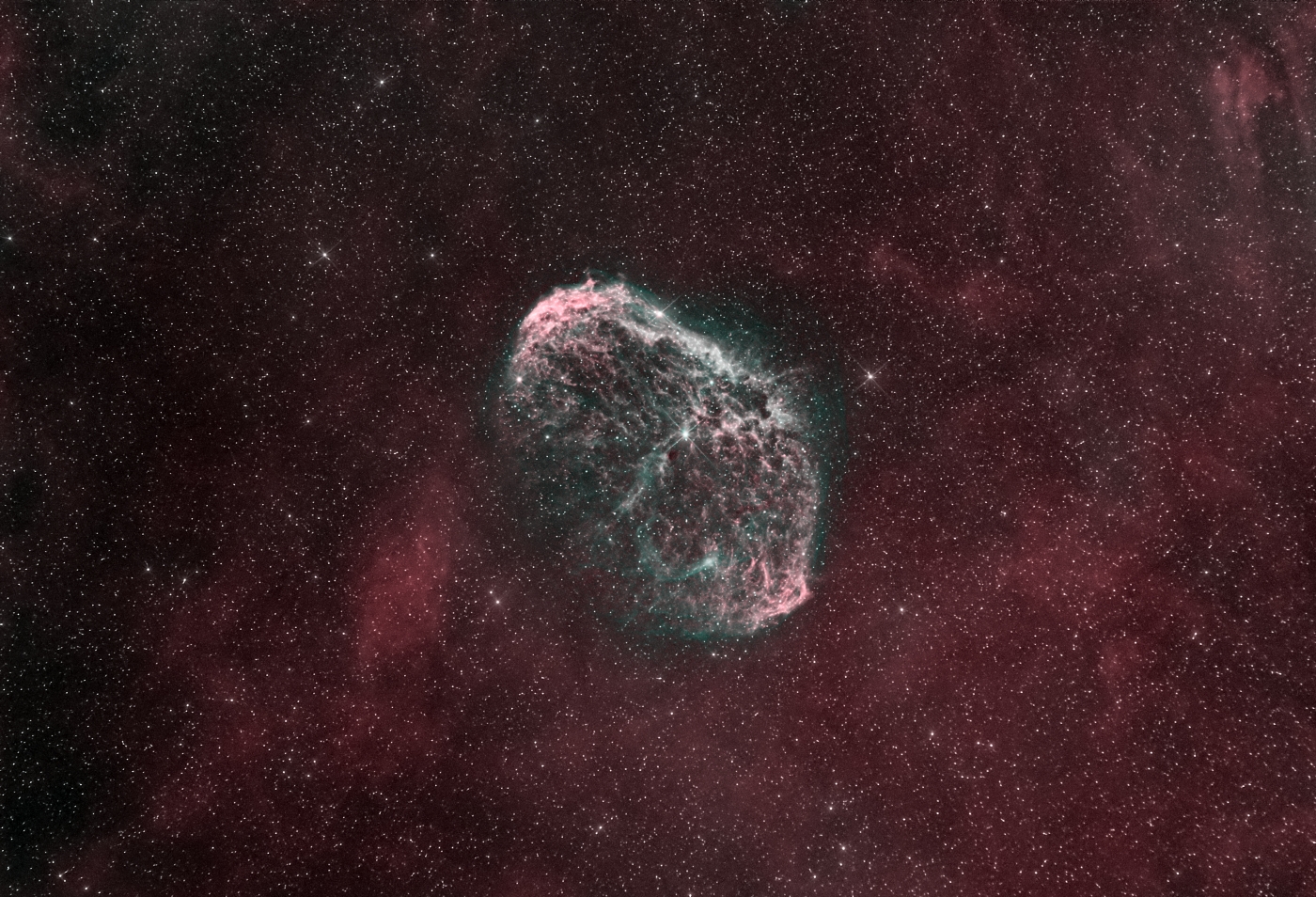
Although it does look like a miniature version of the well-known Veil (or Cirrus) Nebula, NGC 6888 is in fact neither a supernova remnant nor a planetary nebula, but one of the rare Wolf-Rayet nebulae. As the name already suggests, at the heart of this nebula is a Wolf-Rayet star (the bright star located centrally within the nebula). These stars rank among the most massive and hottest stars known. Characteristic for Wolf-Rayet Stars are their strong stellar winds, approximately 2.000 kilometers per second, and the enormous mass-loss associated with them, they can lose an entire solar mass in only 10.000 years. The central star exhibits an absolute absolute magnitude of -4.4 mag, radiating thus 5.000 times more brightly as our sun, however the maximum energy output lies in the UV range.
The nebula is illuminated by two independent ionization procedures. One illumination source is the central star, which ionizes the nebula (particularly the [OIII] line) due to its strong UV emission. The other ionization source is the collision of the fast stellar winds with slower moving stellar winds from the earlier red-giant stage of the same star, which results in an impact front, which in turn heats up the material.
Wolf-Rayet stars and their nebulae are short-lived phenomena (in astronomical timescales), these stars will erupt in supernovae during the next million years.
The nebulosity emits all of its light in isolated emission lines. The most prominent of those are the Hα and [OIII] lines, which were exclusively recorded to obtain the image shown above. This is a "natural color" composition mixed so that the resulting colors are close to the visible spectrum of the human eye. The following mixture was used:
 NGC 6888 - Crescent Nebula, Wide Field;
NGC 6888 - Crescent Nebula, Wide Field;
 NGC 6888 - Crescent Nebula in Hα, which is part of this image;
NGC 6888 - Crescent Nebula in Hα, which is part of this image;
 NGC 6888 - Crescent Nebula in [OIII], which is part of this image.
NGC 6888 - Crescent Nebula in [OIII], which is part of this image.
Exposure Data